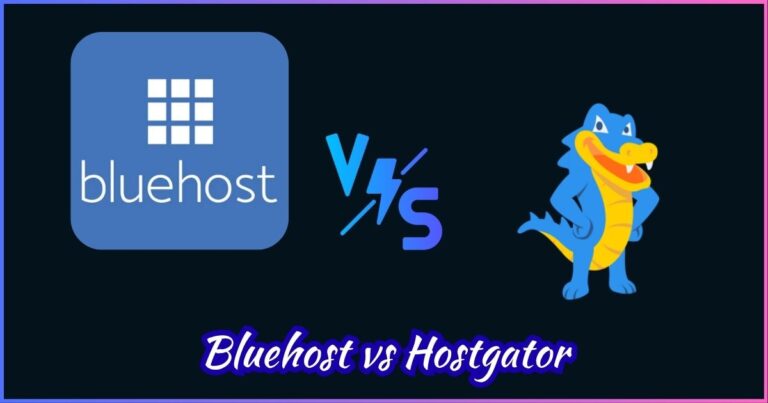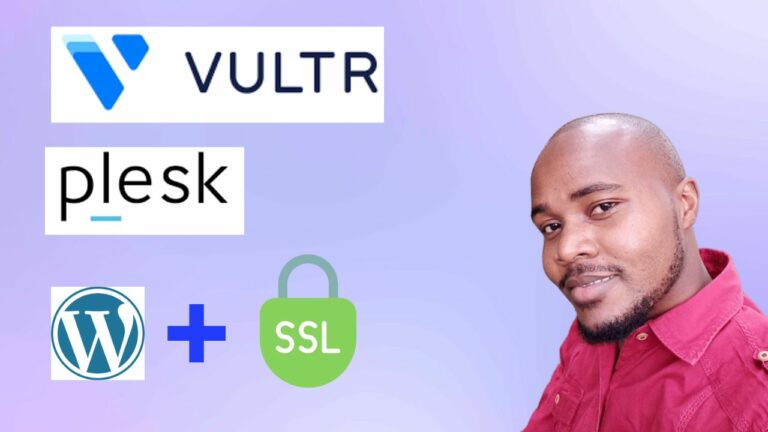AI-Driven Cloud Optimization
AI-Driven Cloud Optimization: Transforming Cloud Effectiveness with Clever Innovations
Welcome to our friendly guide on AI-Driven Cloud Optimization. You may have always wondered how enormous organizations can render online services so potent and make them accessible at a reasonable cost. Imagine a smart assistant that maintains your computer resources in the cloud in equilibrium, making real-time adjustments.
AI-driven cloud optimization is a breakthrough technology that uses intelligent computer programs and data analysis to make the best use of cloud resources. This approach helps improve how systems work, saves money, and boosts efficiency by automatically handling resource management tasks. In this report, we will explore the advantages, practical uses, real-world examples, and key facts about AI-driven cloud optimization.
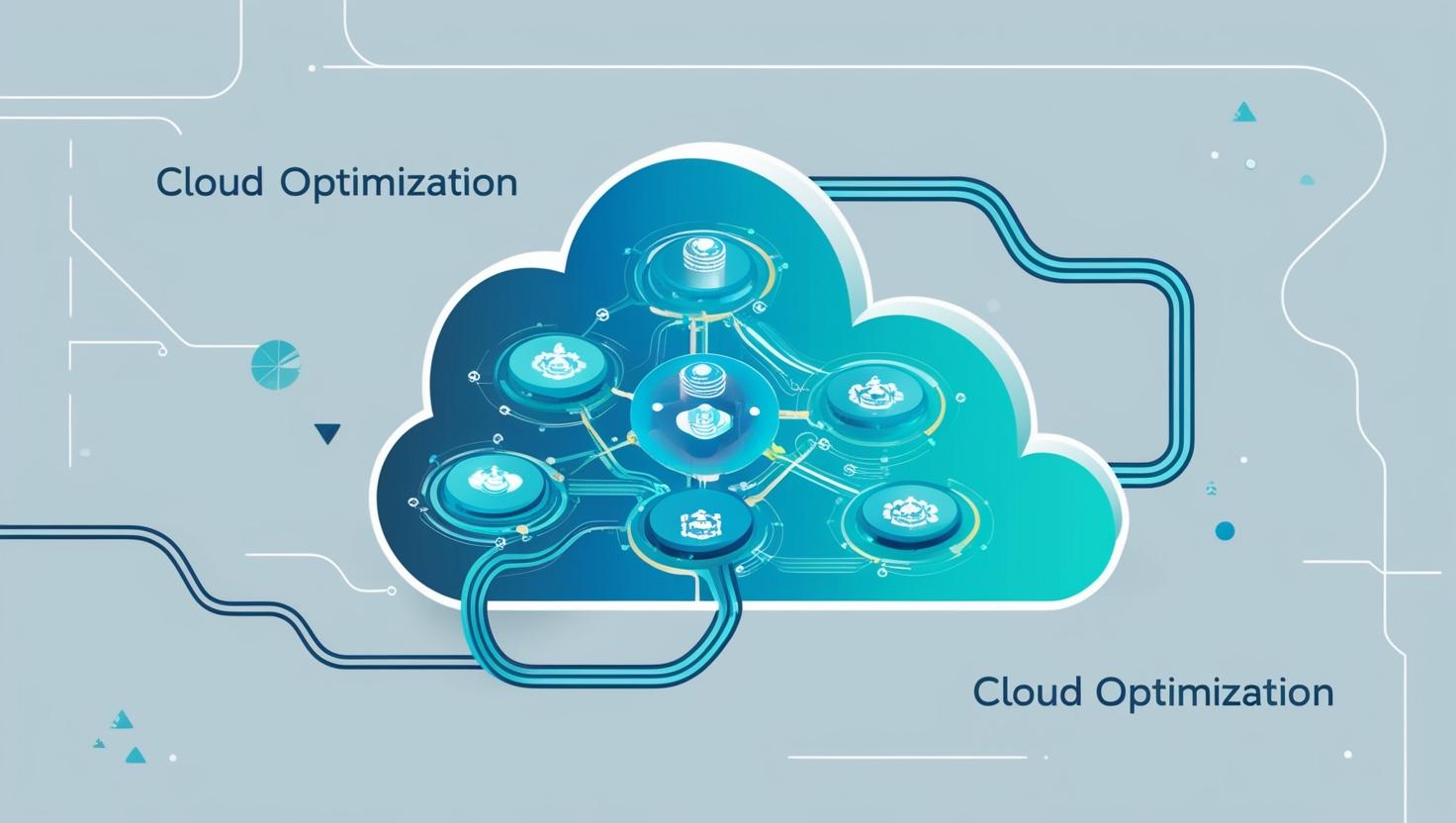
Key Takeaways
- Enhanced Efficiency: AI-driven cloud optimization automates resource allocation, ensuring optimal use of computing power, storage, and network resources.
- Cost Reduction: By dynamically scaling resources and leveraging predictive analytics, you can significantly cut down on wasted expenditures and operational costs.
- Improved Scalability & Resilience: Proactive autoscaling and load balancing dramatically reduce downtime during traffic surges, leading to faster response times.
- Robust Security: Continuous monitoring and real-time anomaly detection bolster your system’s security and ensure regulatory compliance.
- Proven Impact: Real-world case studies demonstrate tangible improvements in performance, reliability, and cost savings, highlighting the strategic advantage of AI in cloud optimization.
Overview & Strategic Significance
Most companies today use the cloud to store data, host apps, and serve customers. But what if the cloud could be optimized programmatically? That’s where AI-Driven Cloud Optimization comes in. By using computer programs that learn from experience, businesses can scale resources automatically, cut wasteful spending, and keep systems running at top speed.
Think about this: suppose you had a robot that sorted your school work and supplies, would not your life be easier? The same is how AI organizes and streamlines cloud systems for businesses. It accomplishes that by reading through information, predicting future needs, and pre-isolating issues so that they don’t become behemoths.
In this section, we will cover:
- What is AI-Driven Cloud Optimization? – A simple explanation of this technology.
- Why it is important – How it helps companies save money and work faster.
- Key objectives – The goals of using AI to manage cloud resources.
What is AI-Driven Cloud Optimization?
AI-Driven Cloud Optimization is a way of using smart computer programs to improve how cloud resources are used. Instead of having a person manually adjust computer settings, AI uses data to make decisions automatically. This means the cloud can change on its own to match what is needed at that moment.
Why is it Matters
Have you ever accidentally left a household lighting switched on? Now consider it in a huge building – it would be a tremendous energy and money wastage! Similarly, businesses waste money or do not perform to their best unless they utilize cloud resources to the best. AI avoids it by:
- Saving money – It cuts down on waste and reduces costs.
- Improving speed – It ensures that websites and apps run quickly.
- Boosting security – It watches out for unusual activity that might be a threat.
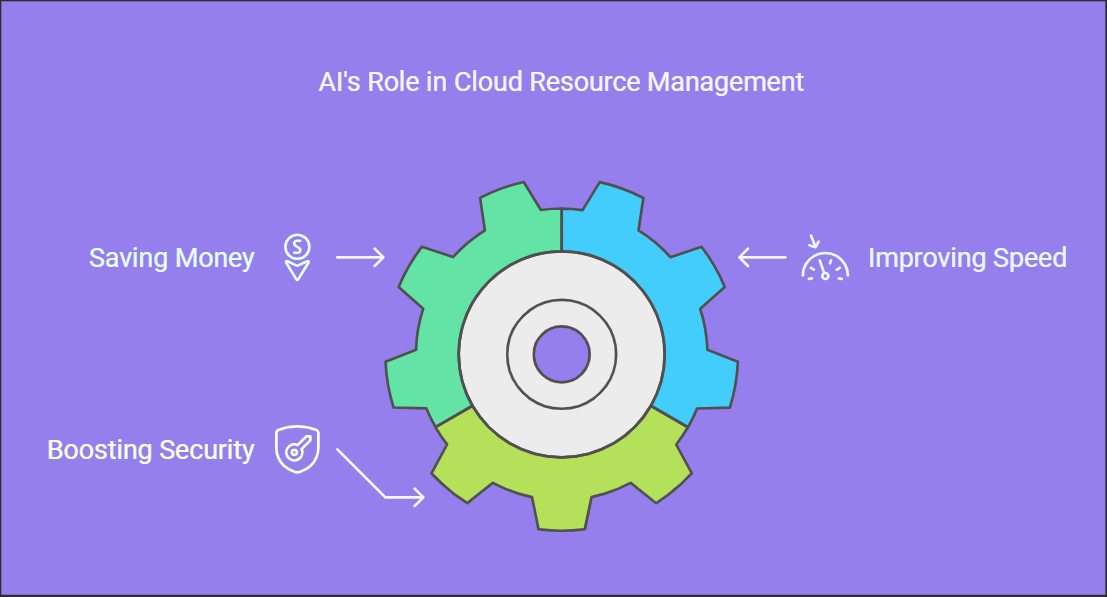
With these benefits in mind, many companies are now turning to AI-Driven Cloud Optimization to keep up with the fast pace of technology.
Key Benefits of AI-Driven Cloud Optimization
Imagine having a toolbox not only to store your tools in, but to guide you in how to use each one automatically. Such is the promise with AI-based cloud optimization—having a clever sidekick dynamically adjust your digital infrastructure in real-time.
Cost Savings & Resource Precision
One of the greatest advantages of AI for cloud management is that it can identify and eliminate unseen inefficiencies. Rather than overpaying for unused capacity or underutilization, AI makes intelligent adjustments in resource allocation—fine-tuning your computing power precisely to demand.
Here are a few ways AI saves costs:
- Dynamic Scaling: AI allocates more resources during peak traffic and shuts them down in slack times, so you only pay for what you’ve used.
- Waste Elimination: It continuously monitors your environment to locate and turn off unused or idle resources.
- Spending Optimization: By analyzing minute usage patterns, AI assists you in negotiating improved rates from the cloud providers, getting maximum value out of your budget.

Boosting Performance & Flexibility
No one likes a slow system. AI doesn’t simply keep your cloud infrastructure purring along sweetly—it makes it a performance powerhouse. Constantly monitoring and making adjustments, AI gets your apps launching lightning-fast and scaling in an instant as your customer demands change.
- Instant Responsiveness: Auto-optimizations enable your system to quickly respond to usage spikes and lulls.
- Seamless Scalability: Whether scaling up for a big sales event or scaling down off-peak periods, AI keeps your infrastructure flexible and responsive.
Fortified Security & Compliance
Think about having a security guard who is always on duty, watching over your cloud environment every hour of the day and night. This is the role AI plays. It constantly looks for anything out of the ordinary, alerts you to possible threats, and ensures your security measures are always updated. This ongoing vigilance keeps your data safe and also helps you comply with new and changing regulations.
Streamlined Operations & Innovation
Repetitive, manual tasks can hold back even the best teams. AI liberates your people by automating mundane processes—like server provisioning and resource allocation—so your team can concentrate on inventive, high-impact work that drives your business forward.
In essence, cloud optimization based on AI not only automates tasks—but redefines them. Intelligently optimizing costs, enhancing performance, strengthening security for your infrastructure, and automating the routine, it allows your business to innovate and expand without the weight of IT.
Applications & Use Cases
You are probably wondering: “How does all this work in the real world?” Let us take a look at some common applications and uses of AI-Driven Cloud Optimization that have a dramatic effect on everyday business operations.
Predictive Analytics & Real-Time Resource Management
One way AI helps is by using predictive analytics. This means it looks at past data to guess what might happen next. For example, if a website usually gets a lot of visitors in the evening, AI can prepare extra resources ahead of time.
Real-time resource management is another smart feature. Imagine your favorite game server automatically adding more power when many players join, then scaling down once everyone leaves. That’s the kind of magic AI brings to cloud systems. (1)
Anomaly Detection & Load Balancing
AI is also very good at flagging problems before they become problems. That is known as anomaly detection. It looks for unusual patterns in resource usage and informs the team if something does not look right.
Also, AI makes load balancing possible. It is a practice of spreading activities evenly across servers so that one part of the system is never congested. Imagine dividing an enormous pizza amongst friends so all get the same amount! (2, 3)
Semantic Variations in Practice
Throughout cloud management discussions, you may hear terms like intelligent cloud optimization, machine learning cloud management, or even AI-enhanced infrastructure. Although the words vary, they all describe the same smart process of making cloud systems work better.
Companies can balance cost, speed, and security using these practices and have their services run at their best at any given time.
Case Studies: Real-World Examples of AI-Driven Cloud Optimization
AI-driven cloud optimization is revolutionizing how businesses manage their digital infrastructures. Studies show that over 70% of organizations have achieved significant cost savings by eliminating resource waste (4;5). Additionally, more than half of businesses have experienced a 55% improvement in application responsiveness after implementing these strategies (4). Let’s look at a few real-world examples where AI-Driven Cloud Optimization has made a big difference.
Local Retailer Enhances Online Efficiency
Source: Inspired by insights from DigitalSMB’s AI Success in Small Business case studies (DigitalSMB) and recent research on AI-driven cloud optimization for SMEs.
- Background:
A regional retail chain, known for its frequent promotional events, faced significant variability in web traffic. During peak promotions, the website struggled to handle surges, while off-peak periods resulted in wasted cloud resources. - Challenge:
To avoid customer service interruptions during peak traffic of high-traffic events, the retailer was forced to maintain unused cloud capacity. The over-provisioning during off-peak periods led to unnecessarily high cloud spends, and reduced service during peaks impacted user experience. - Solution:
The store used a cloud optimization platform fueled by AI that uses predictive analytics to monitor past and real-time traffic patterns. The platform adjusts the distribution of resources automatically—boosting in times of traffic spikes and cutting back during quiet times—to make the best use of cloud resources. - Results:
This proactive, data-driven approach reduced the retailer’s cloud expenditures by about 25% and improved website load times by approximately 35%. These improvements not only enhanced the customer experience during promotional events but also freed up capital for reinvestment in business growth.
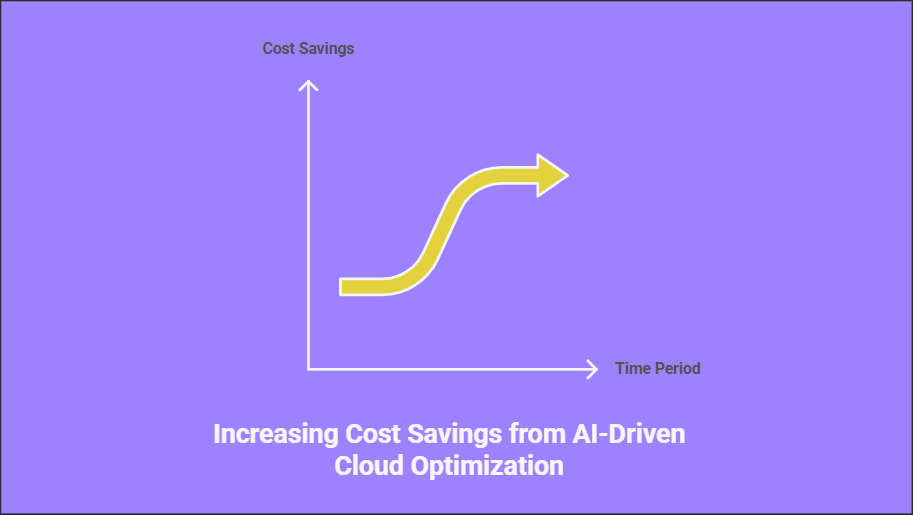
Several industry reports, including insights from Gartner’s 2023 IT Automation predictions mention that “by 2024, enhancements in analytics and automatic remediation capabilities will refocus 30% of IT operations efforts,” although this is not cloud management specific.
In addition, as noted by Futurism Technologies, cloud practices not only boost operational effectiveness and flexibility but also drive business growth. According to IDC, by 2020, 67% of enterprise software and infrastructure were to be cloud-based—spurring a six times increase in cloud computing spend. Futurism’s Cloud Managed Services (CMS) allow businesses to realize cloud services’ full potential by adopting customized, platform-based solutions that foster digital transformation, enhance processes, secure information, and accelerate workflows.
Together, these results show that organizations can achieve considerable cost savings and a competitive edge in the rapidly changing digital age with AI-based cloud management tools.
Cloudways Autonomous: Hands-Free, Real-Time Scaling
With Cloudways Autonomous, you enjoy a breakthrough, fully managed hosting experience for WordPress that eliminates the complexity of autoscaling. Built on a robust Google Kubernetes Engine cluster, Autonomous automatically deploys and scales your applications in real time. Every incoming request is securely routed through Cloudflare Enterprise, ensuring that you benefit from lightning-fast load times and top-notch security.
“The impact you’ll see is striking. Imagine slashing your idle time during traffic spikes from 20% to 0%, while significantly enhancing your site’s overall performance. You could also cut the syncing time with your retail POS systems from a typical 4 minutes to a mere 10 seconds—a 96% boost in processing speed.” (Cloudways)
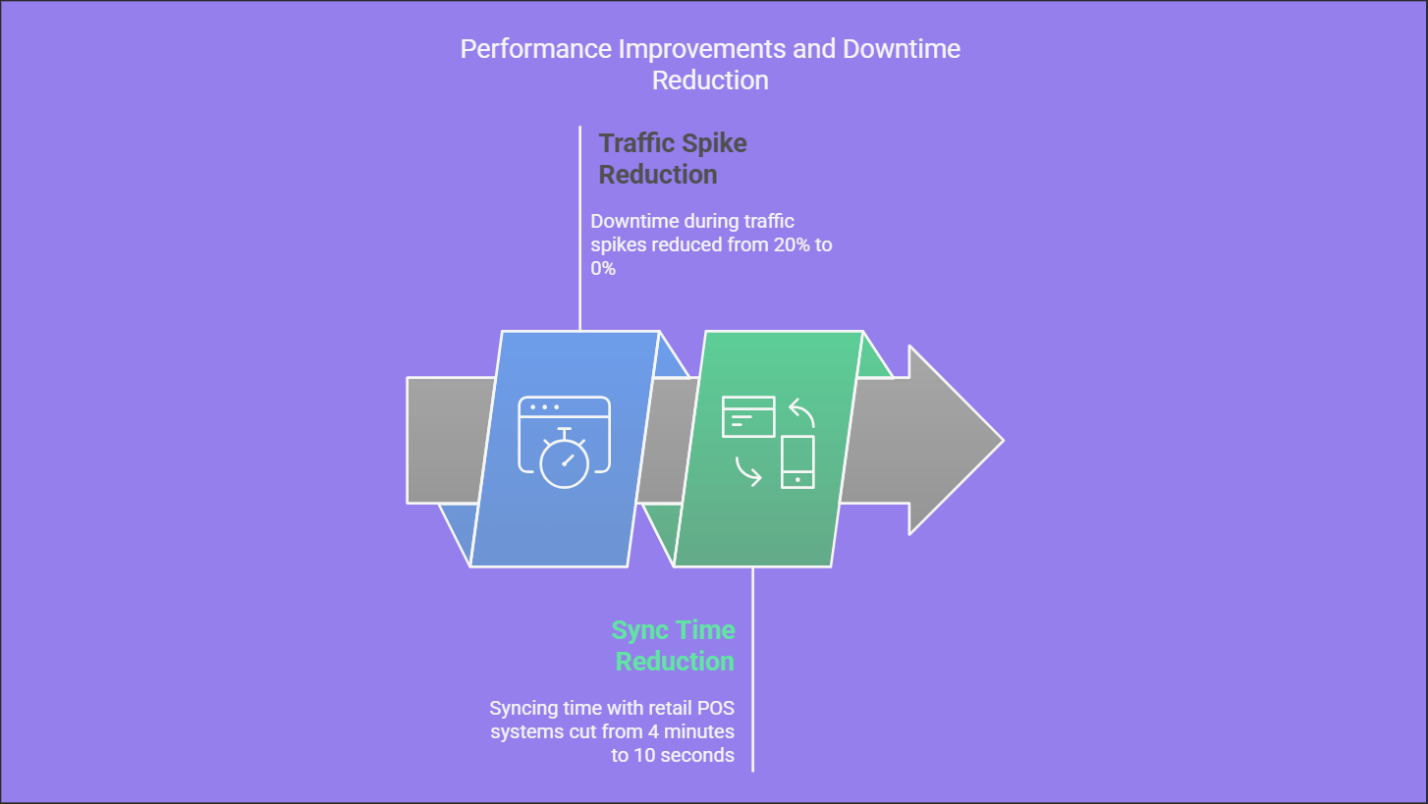
But that’s not all. In extensive benchmark tests, Autonomous has outperformed its competitors across several key metrics:
- Add to Carts per Second: At 100 concurrent users, you can expect Autonomous to achieve 6.54 “Add to Cart” events per second—around 7 times more than Competitor K’s 1.07 and Competitor W’s 1.49. At 200 users, it delivers 6.86 events per second, and even under a heavy load of 1000 concurrent users, it reaches an impressive 12.35 events per second, while competitors fail to register any events.
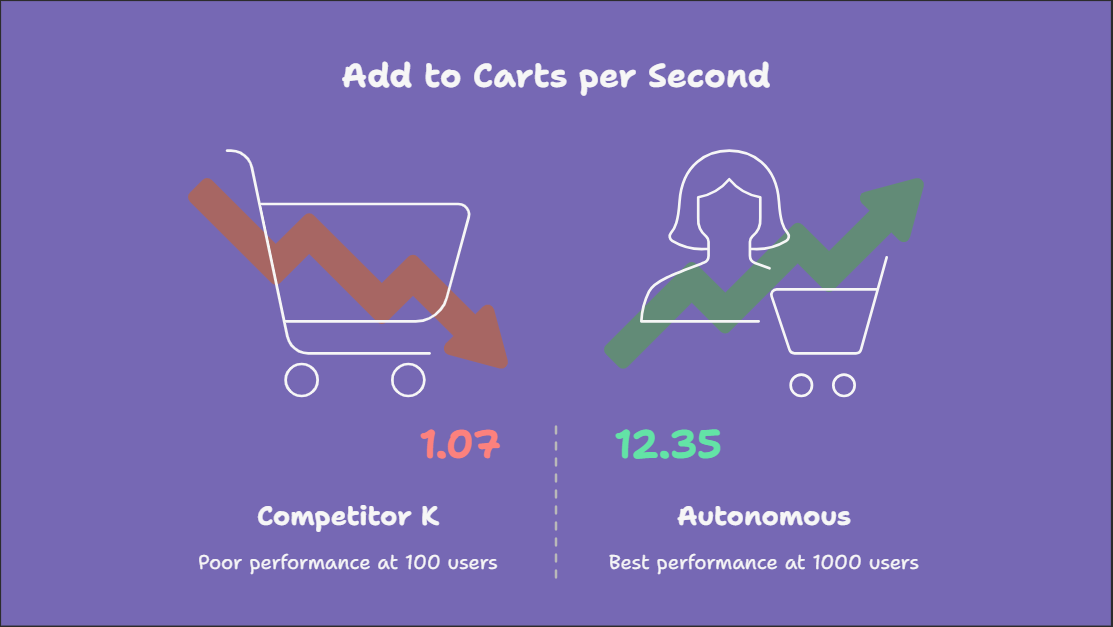
- Checkouts per Second: When it comes to processing checkouts, Autonomous consistently leads the pack. It achieves 6.54 checkouts per second at lower loads compared to Competitor K’s 1.04 and Competitor W’s 0.39. At 200 concurrent users, you see 6.84 checkouts per second—far surpassing Competitor K’s 0.99—and at 1000 users, Autonomous maintains a strong performance with 8.60 checkouts per second, whereas competitors struggle with failures.
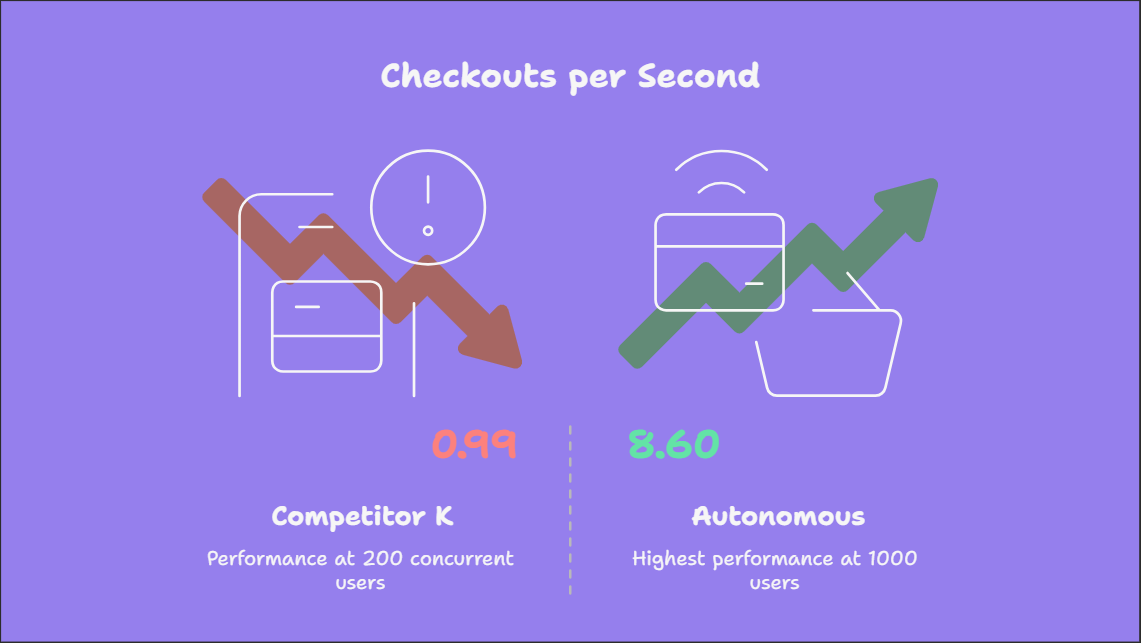
- Average Response Times: You benefit from excellent responsiveness, with Autonomous clocking an average response time as low as 2.7 seconds under a load of 200 users and a maximum of 9.96 seconds at 1000 users. In contrast, you’d face minimum average response times of 23 seconds with Competitor K at 200 users, which can exceed 60 seconds at higher loads.
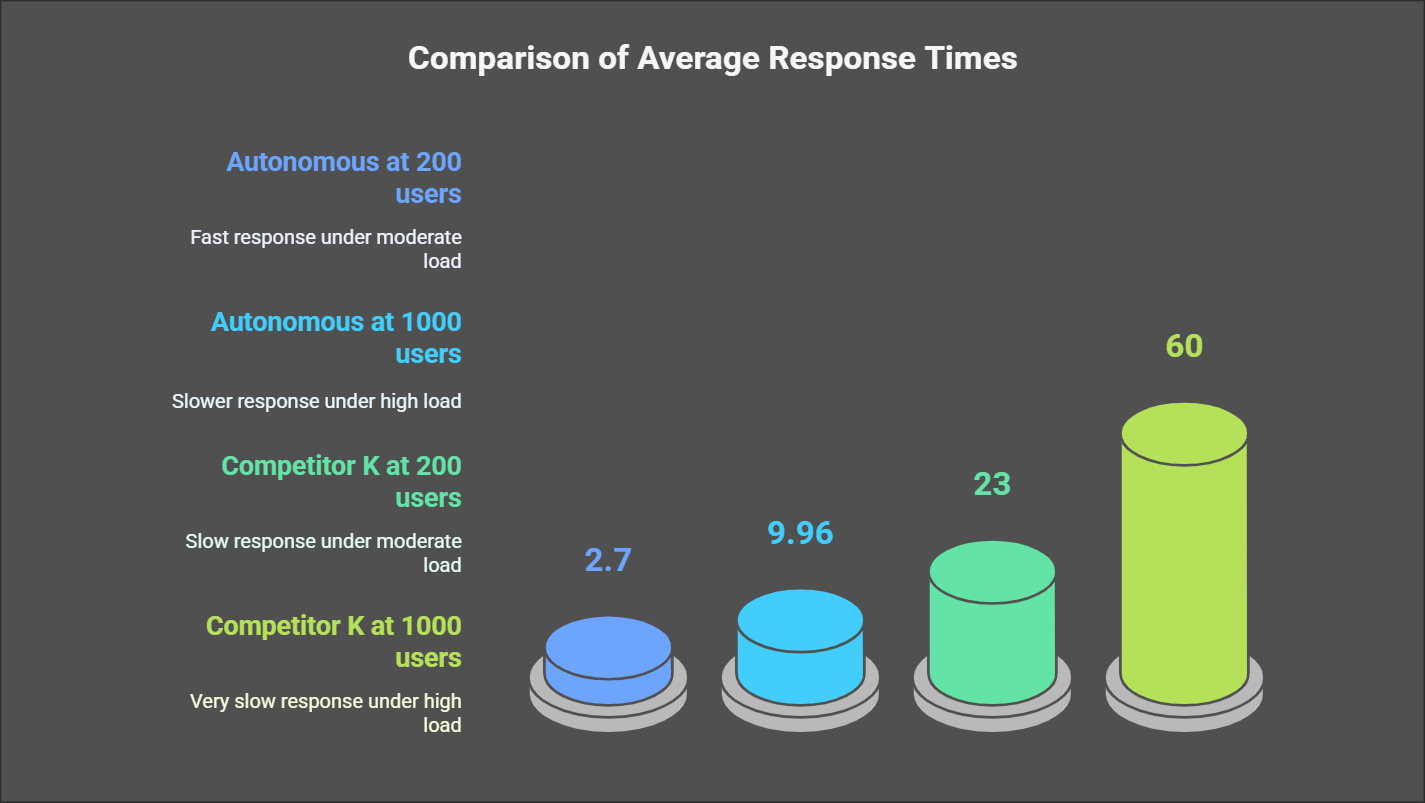
- Requests per Second (RPS): Autonomous handles high traffic with ease. At 200 concurrent requests, it achieves 47.89 RPS compared to Competitor K’s 7.23 RPS. This gap widens as the load increases—at 500 users, Autonomous maintains 40.98 RPS, and at 1000 users, it impressively reaches 77.98 RPS, while Competitor K’s performance drops below 5.8 RPS.
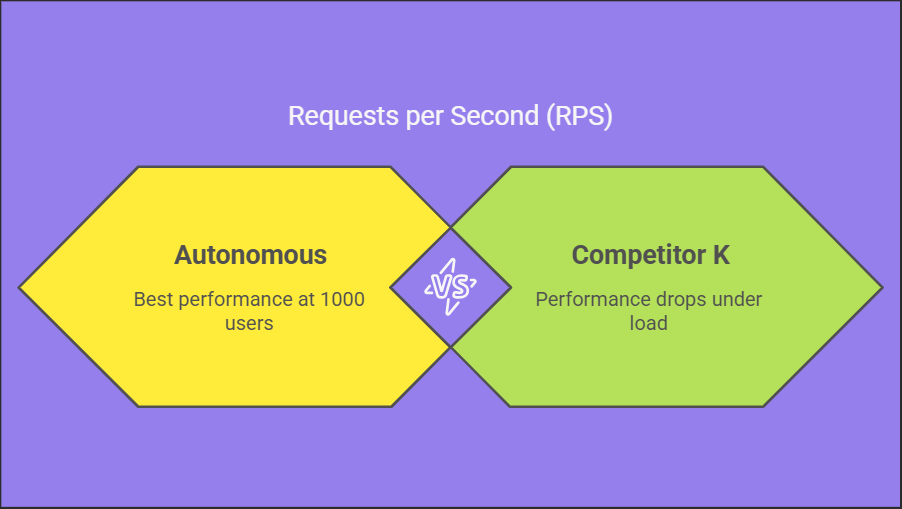
- Error Rates: Reliability is key. Autonomous records a very low error rate of just 0.10% at 200 users, slightly increasing to 2.48% at 500 users—still far ahead of Competitor K’s 29.10% and Competitor W’s near-100% error rates. Even at 1000 concurrent users, Autonomous keeps errors at only 4.5%, whereas competitors experience error rates over 50% or close to 100%.
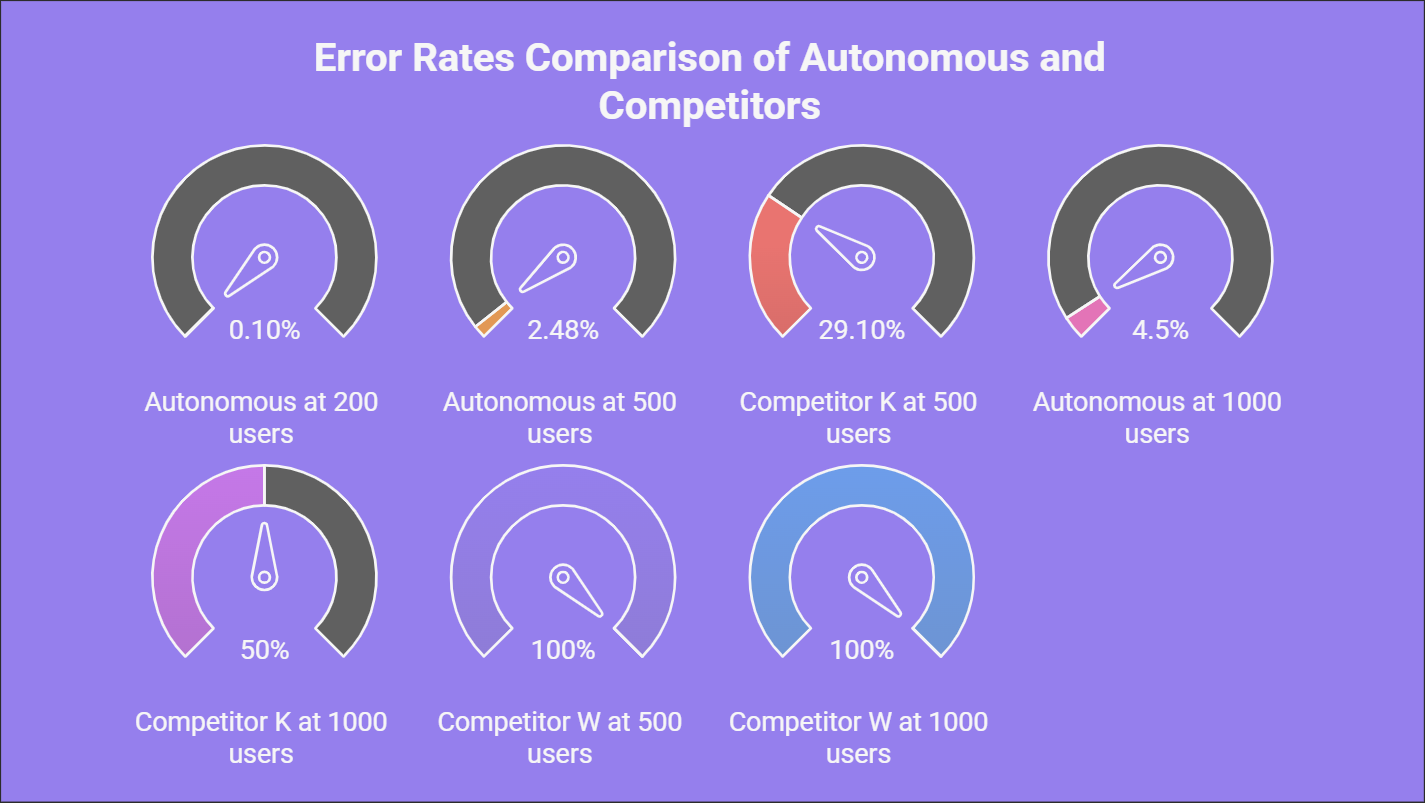
Since the beta launch on April 13th, 2023, you’ve seen remarkable adoption—over 900 applications from industries such as eCommerce, LMS, influencer platforms, and media sites went live in just the first month. This innovative solution has empowered SMBs and SMEs, offering you a hands-off, fully managed autoscaling environment that was once accessible only to larger enterprises.
With continuous improvements driven by customer feedback—including on-demand staging, app-based PHP version selection, real-time billing, and expanded regional support—Cloudways Autonomous now provides you with a strategic hosting advantage starting at just $35/month. This means you can focus entirely on growing your business while leaving high-traffic management, scaling challenges, and performance optimization to an intelligent, fully automated system.
Netflix: Predictive Scaling for Peak Demand
Picture this: sitting on the couch, watching your favorite television program on a peak evening and feeling no buffering. Netflix employs AI-driven predictive analytics to control its cloud resources. Netflix can make additional computing resources available in advance by anticipating when more users will be watching. Thus, the service is delivered seamlessly even on peak evenings.
Amazon Web Services (AWS): Auto-Scaling for Efficiency
AWS is another great example. They use AI to automatically adjust resources based on how much is needed at any given moment. When there is a spike in usage, AWS adds more capacity without human intervention. This auto-scaling process not only keeps services running smoothly but also saves money by reducing wasted resources.
Google Cloud Platform (GCP): Deep Learning for Anomaly Detection
Google Cloud Platform does it differently, though, using deep learning. Its network is always monitoring the cloud for anything unusual. If something appears to be amiss, it will trigger an alert so the issue can be fixed in a timely manner. This forward thinking keeps minor issues from turning into major outages.
These examples show how small and large businesses can benefit from AI-Driven Cloud Optimization. They also remind us that whether we are streaming movies online or running an online store, smart cloud management makes our digital life easier.
Challenges, Trends & Future Outlook
Although the benefits are clear, it’s not easy to implement AI-Driven Cloud Optimization. With new tech, there’s a few bumps in the road. But those challenges also present a door to some intriguing future trends.
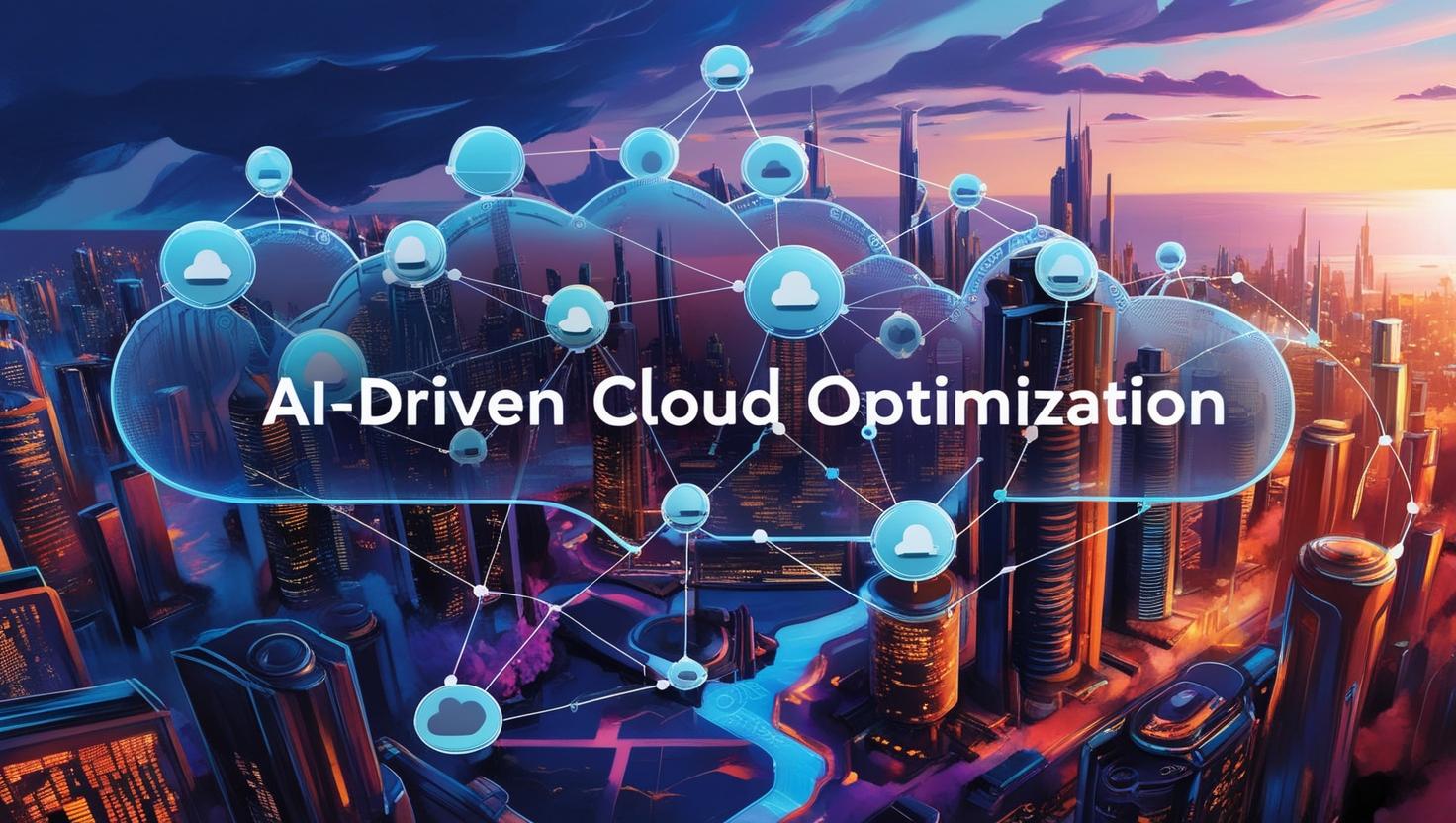
Current Challenges
Other companies struggle to integrate AI with existing systems. If you have ever tried to build a new toy with somewhat misplaced parts, you will understand the aggravation. Legacy systems, or older computer systems, are often not compatible with more modern AI tools.
There’s also the question of putting your faith in a machine to make decisions. It makes sense to hesitate when you first let a computer have control over important duties. But as more businesses recognize the benefits and become accustomed to these machines, faith grows.
Emerging Trends
The future of AI-Driven Cloud Optimization is bright. Here are some trends to watch:
- Hybrid Cloud Models: More businesses are using a mix of private and public clouds. AI helps balance these environments for maximum efficiency.
- Advancements in Machine Learning: New techniques in machine learning are making predictions even more accurate.
- Increased Automation: As AI continues to improve, more tasks will be automated, reducing the need for human intervention in routine tasks.
- Stronger Security Measures: With cyber threats on the rise, AI will play a key role in keeping systems safe by spotting dangers early (5).
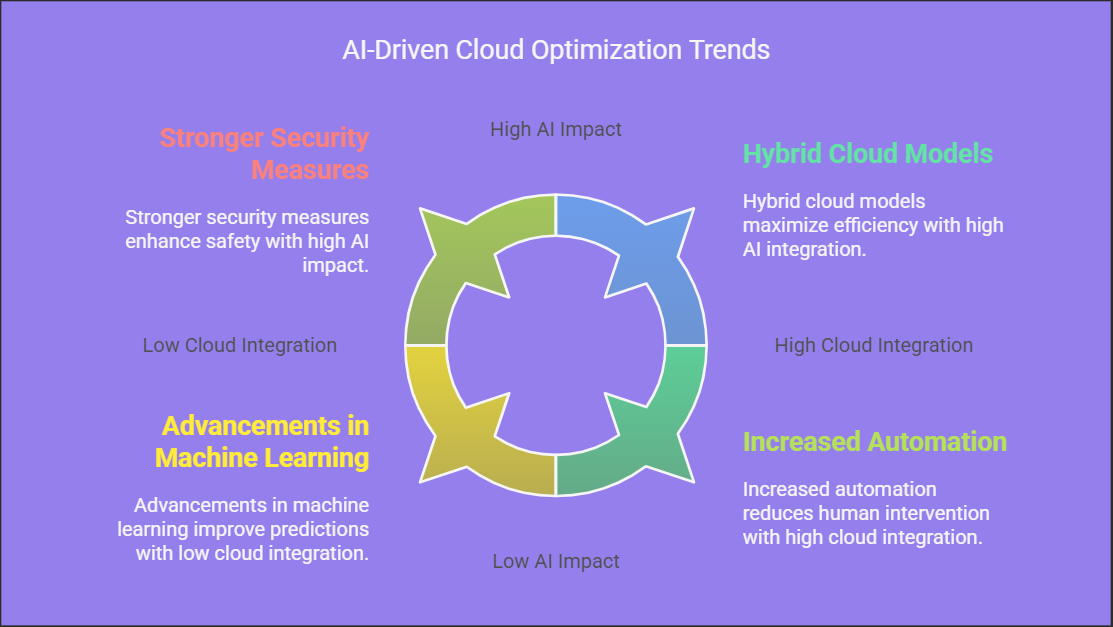
What Does the Future Hold?
Imagine a future where your cloud system mostly runs itself, needing very little supervision. This idea might seem like science fiction now, but it’s becoming more real each day. Companies are investing a lot in research and development to build smarter cloud systems. These advancements help solve problems faster, make better use of resources, and strengthen security against threats.
The road to fully self-managing cloud systems is full of learning and exciting innovations. As AI technology keeps improving, we can expect significant changes in how businesses manage their digital environments. This means businesses will soon have more efficient and secure cloud systems, allowing them to focus on other important tasks.
Conclusion: Key Takeaways & Revisiting the Primary Thesis
Let’s have a brief recap of what we’ve learned about AI-Driven Cloud Optimization and why it’s a game changer. We started by learning the basic idea: using smart computer programs to optimize cloud resources. We learned that this technology can save money, improve performance, and even improve security.
Remember how you wished for something to be automated – like a washing machine that sorts your clothes by color! That is what AI does to cloud infrastructures. It isolates, rearranges, and optimizes resource usage without continuous human input.
In our analysis, we looked at:
- The strategic potential of AI in today’s cloud management.
- Key benefits such as cost reduction, improved performance, scalability, and enhanced security.
- Real-world applications such as predictive analytics, real-time monitoring of resources, and anomaly detection.
- Case studies by industry leaders such as Netflix, AWS, and GCP.
- Present challenges and future trends that are making cloud optimization evolve.
Using AI-Driven Cloud Optimization helps businesses improve their efficiency and remain competitive. This technology simplifies complicated tasks and brings new opportunities for innovation and growth. Think about your own online needs: wouldn’t having a smart assistant to keep everything running smoothly be fantastic?
In summary, AI-Driven Cloud Optimization isn’t a fancy term – it’s an absolute necessity for modern business. By striking a harmonious balance of cost, performance, and security, it makes itself an unbeatable strategy to be employed today in the busy digital age. Whether you work on a simple website or operate a massive corporate system, everything discussed here is likely to act as a direction to guide you towards more efficient, more effective cloud management.
Other References
- https://wjaets.com/sites/default/files/WJAETS-2024-0137.pdf
- https://blog.aspiresys.com/cloud/ai-cloud-optimization-exploring-a-plethora-of-promising-possibilities/
- https://dev.to/vcian/ai-driven-cloud-resource-optimization-a-developers-guide-2h4
- https://blog.aspiresys.com/cloud/ai-cloud-optimization-exploring-a-plethora-of-promising-possibilities/
- https://duplocloud.com/blog/how-ai-is-optimizing-cloud-platforms/
Disclosure: We may earn commission for purchases that are made by visitors on this site at no additional cost on your end. All information is for educational purposes and is not intended for financial advice. Read our affiliate disclosure.





